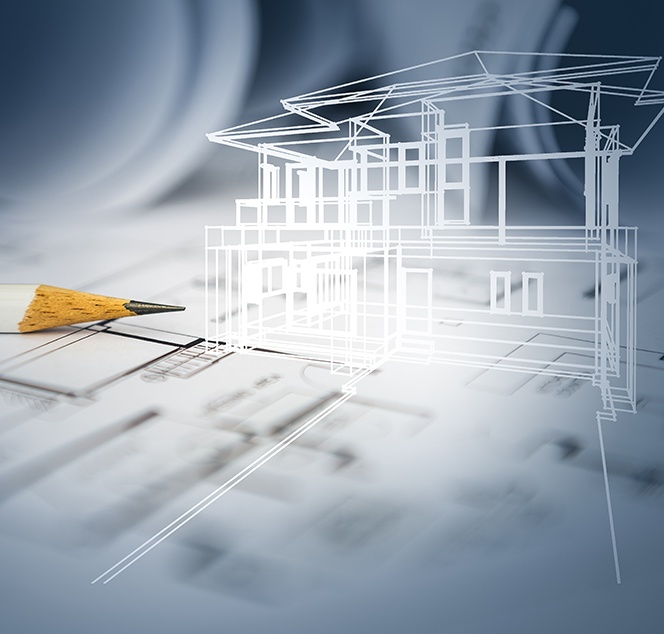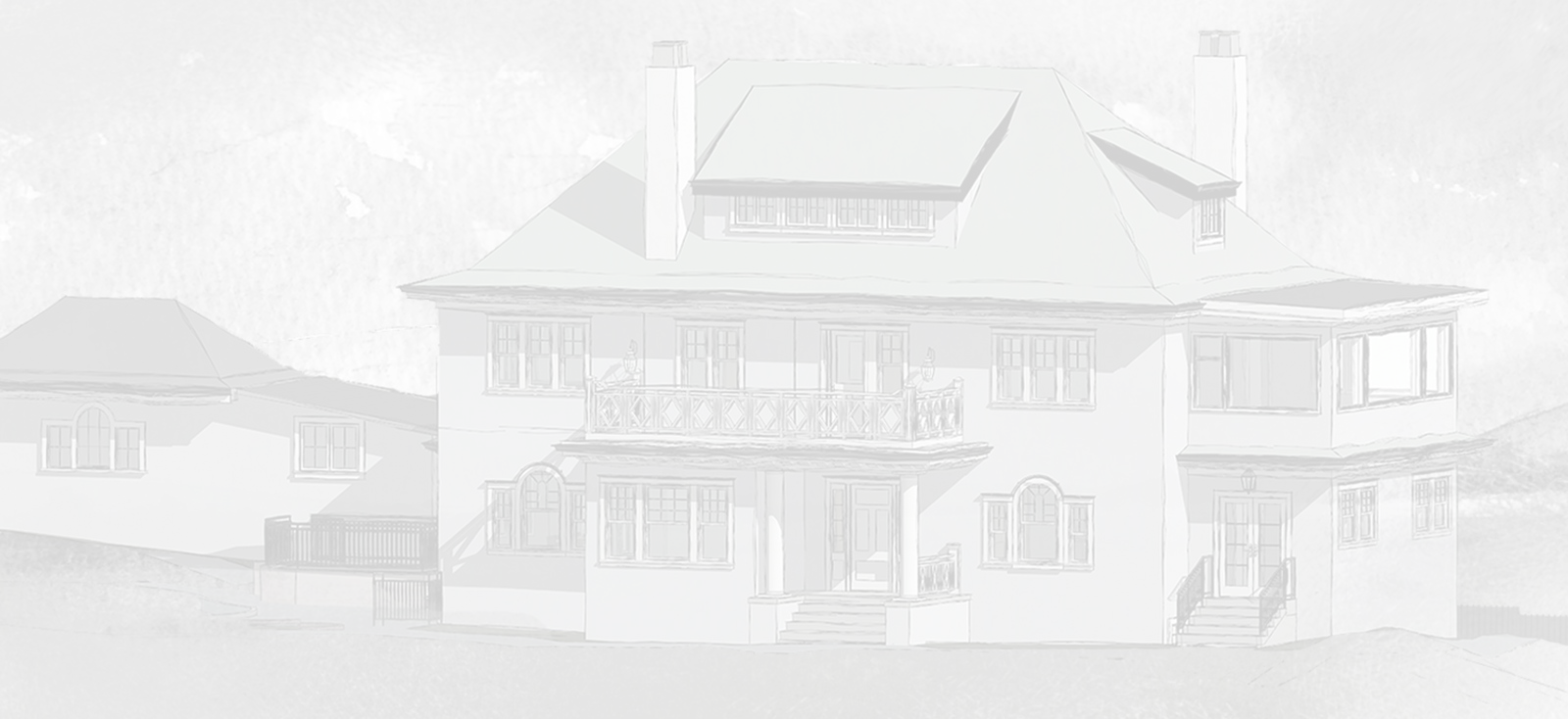Our Heritage Revitalization Agreement service offers a strategic approach to preserving and revitalizing historic properties. Our Heritage Building Consultants navigate the complexities of heritage regulations and urban planning to ensure the seamless integration of modern amenities while maintaining the architectural integrity of heritage buildings.
D3 Dimension Drafting & Design Inc. brings a blend of technical expertise and creative vision to Heritage House Renovation projects, offering innovative solutions that respect the past while embracing the future.

What is an HRA?
A Heritage Revitalization Agreement (HRA) is a formal and voluntary agreement between a property owner and a local government. Its purpose is to facilitate the conservation and preservation of properties with heritage value. The HRA allows local governments to override certain zoning regulations and provide incentives to encourage property owners to protect and maintain the heritage significance of their properties.
When an HRA is established, a bylaw is registered on the title of the property, ensuring long-term legal protection for the heritage features. This means that future owners and occupants of the property are bound by the terms and conditions outlined in the HRA.
The provisions for local governments to negotiate HRAs can be found in Part 15, Section 610 of the Local Government Act. These provisions outline the framework and guidelines for local governments to engage in the negotiation and establishment of HRAs. The specific details and requirements may vary depending on the jurisdiction and local regulations.
Overall, HRAs serve as a mechanism for balancing the preservation of heritage properties with the needs of property owners, providing a framework for collaboration between owners and local governments to safeguard the historical and cultural significance of such properties.
What can an HRA Do?
Each Heritage Revitalization Agreement (HRA) is unique and tailored to the specific property and situation at hand. The flexibility of HRAs allows for customization based on the heritage value and specific needs of the property. An HRA can include various provisions and address multiple aspects related to the conservation and revitalization of the heritage property. Some of the common elements found in HRAs are:

- Superseding Local Government Regulations: An HRA can override certain local government regulations, such as zoning restrictions, to accommodate the specific requirements of the heritage property.
- Varying Use, Density, Lot Size, and Siting Regulations: HRAs can modify the allowed uses, density, lot size, and siting requirements that would otherwise be imposed by local regulations. This flexibility enables property owners to adapt the property to meet their needs while still maintaining its heritage value.
- Varying Permits under the Local Government Act: HRAs can modify or vary permits issued under Part 26 of the Local Government Act, which deals with planning and land use management. This allows for adjustments that align with the objectives of heritage preservation.
- Varying Heritage Alteration Permit: An HRA may include provisions to modify or vary a heritage alteration permit, which is typically required for any alterations or renovations to a heritage property. This allows for flexibility in the scope and extent of alterations while ensuring the preservation of the property's heritage character.
- Detailing the Timing of Agreement Terms: HRAs can specify the duration and timing of the agreement's terms, outlining when specific actions or conservation measures need to be undertaken by the property owner.
- Setting Out the Level of Conservation: The HRA can define the level of conservation required for the heritage property, outlining the specific measures to be undertaken by the owner to preserve its heritage features and character.
- Including Other Conditions as Negotiated: HRAs can include additional conditions and require men ts that are negotiated between the property owner and the local government. These conditions could address factors such as public access, landscaping, building materials, or any other specific considerations relevant to the heritage property.
By encompassing these provisions, an HRA aims to strike a balance between preserving the heritage value of a property and providing the property owner with incentives and flexibility to ensure the property's long-term conservation and viability.
HRA Milestones:
The steps listed below outline the process for initiating and preparing a Heritage Revitalization Agreement (HRA). While the specific steps may vary depending on project requirements, the outline provided gives a good overview of the key stages involved in the HRA process. Let's break down the steps:

- Meet with the City for an initial Review of Scope: Our Heritage Building Consultants will meet with the city representatives to discuss the proposed scope of the HRA and obtain initial feedback. This step allows for an early understanding of the city's expectations and requirements.
- Survey: Coordinate with an outside consultant a detailed topographical survey is an essential step. This survey provides important information about the property and its surroundings, which is necessary for the HRA application and subsequent design and planning processes.
- Engage Heritage Consultant: A heritage consultant is hired to provide professional expertise and guidance throughout the HRA process. The consultant as sis ts in conducting the heritage assessment, preparing the necessary documentation, and developing the heritage conservation plan.
- Engage with Arborist: Coordinate having a tree survey complete to determine tree health for future removal/replacement.
- Preliminary Design Based on Heritage Consultant Recommendations: Based on the recommendations of the heritage consultant, a preliminary design is created. This design takes into account the conservation requirements while considering the property owner's objectives and needs.
- Meet with City Staff for Initial Plan Review and Buy-In: The preliminary design is presented to the city staff for review and to gain their support and buy-in. This step ensures that the proposed design aligns with the city's guidelines and requirements.
- Finalize Layout and Complete Presentation and Application Documentation

Application Documentation:
- Statement of Significance: Prepared by the heritage consultant, this document highlights the heritage value and significance of the property.
- Heritage Conservation Plan: This plan outlines the specific conservation work to be undertaken on the property and details the preservation measures.
- Design Rationale: Explains the design decisions made to preserve and enhance the heritage features of the property.
- Building Permit Drawings: Detailed drawings showing the proposed project's architecture, including site plan, elevations, cross-sections, and floor plans. These drawings typically focus on the exterior design.
- Proposed Materials and Parking Layout: The exterior elevations indicate the proposed materials, and the site plan includes the parking layout with stall dimensions, drive aisles, and other relevant details.
- Landscape Plan: A to-scale plan illustrating the proposed treatment of the site's landscaping, including the type, size, and placement of plant material, as well as the treatment of other surfaces.
- Statistical Table: This table provides a summary of how the proposed project aligns with the applicable zoning regulations, including setbacks, density, floor space ratio, height, parking requirements, etc. It also highlights any requested variances or deficiencies.
- Current Photos: Recent photographs of the building, site, and surrounding properties are included to provide visual context.
It's important to note that the specific requirements for documentation and the sequence of steps may differ depending on local regulations and the complexity of the project. D3 will guide you through these crucial steps to ensure compliance with relevant guidelines and procedures.
Heritage House Renovation - Milestone Public Consultation Process
Public consultations are an important part of the HRA process, and feedback is a tool that can be used to improve the application. Here are some reasons why public consultations is valuable:

- Community Engagement: Public consultations allow the application team to engage directly with the community and demonstrate their commitment to open dialogue and transparency. It provides an opportunity to listen to community perspectives, address concerns, and build positive relationships with local residents.
- Stakeholder Input: Public consultations enable stakeholders, such as heritage groups, neighbourhood associations, and local authorities, to provide input and contribute their expertise to the HRA process. This input can help shape the project in a way that aligns with community values.
- Awareness and Understanding: Participating in public consultations allows the applicant team to communicate their project's objectives, the significance of the heritage property, and the proposed plans for revitalization. It helps increase public awareness and understanding of the project, promoting a more informed and constructive discussion.
- Mitigating Concerns: Public consultations provide an opportunity to address any concerns or misconceptions that community members may have about the project. By actively participating and engaging in dialogue, the application team can address these concerns and work towards finding mutually beneficial solutions.
- Building Consensus: Through public consultations, the client can gather valuable feedback and suggestions from the community, which can contribute to the development of a more comprehensive and successful HRA. Engaging in discussions and seeking consensus can help build support for the project and increase the likelihood of its approval.
It's important to note that the specific process and requirements for public consultations may vary depending on the municipality and local regulations.
-
Phase 1
Preliminary Design
Data Gathering,
Site Studies,
Aesthetic Exploration,
Zoning Review
-
Phase 2
Schematic Design
Design Options,
Floor Plan Concepts,
3D Model Studies,
Renders & Sketches
-
Phase 3
Design Development
Detailed Renders,
Plan refinement,
3D walk-throughs
Contractor Engagement,
Budget review
HERITAGE HOUSE RENOVATION -
D3 Role in the HRA process
D3 Dimension Drafting and Design is a full-service design firm that provides comprehensive services related to Heritage Revitalization Agreements (HRAs). As a full-service design firm, we offer a range of services tailored specifically to the needs of property owners and developers seeking to undertake heritage conservation and revitalization projects.
Providing expert advice and guidance to clients throughout the HRA process, including meetings with municipal authorities, heritage consultants, heritage committees, or community stakeholders to advocate for preserving and revitalizing heritage properties.
It's important to note that the services offered by D3 Dimension Drafting and Design will vary by project, Please refer to the scope of work included in this proposal for details.

Phase 1:
Preliminary Design
The data-gathering stage provides a comprehensive understanding of the heritage property and its context, ensuring that the subsequent planning and design processes are informed by accurate and relevant information. It is essential to consult with heritage professionals and local authorities to ensure compliance with specific data requirements and guidelines set forth by the municipality.
What to expect: D3 will conduct on-site visits to visually inspect the property, document its existing condition, and gather specific details. Our Heritage Building Consultants will also complete a thorough documentation review. Including but not limited to historic building permit drawings and any available documentation. D3 will engage with the heritage consultant to assess the property's heritage value and provide recommendations for preservation and restoration and the municipality to get their perspective on possibilities and limitations.
What we need: Your ideas and your goals. Our Heritage Building Consultants will work together to get a strong understanding of your requirements, budget, and overall goals for the project.

Phase 2:
Schematic Design
This is the time to take all the big ideas and see what possibilities we can create. Schematic design evolves over a series of meetings and is intended to explore a range of potential approaches. Our Heritage Building Consultants generate 3D renderings as well as preliminary drawings.
What to expect: D3 will collaborate with the Heritage Professional and property owner to develop a comprehensive heritage conservation plan that outlines the specific measures and strategies required to preserve and enhance the heritage features of a property as well as create design concepts and plans that balance heritage preservation with contemporary needs and functionality. This outcome will be schematic drawings, renderings, and 3D visualizations that include recommendations for restoration, adaptive reuse, and sensitive additions or alterations.
What we need: Your Time. This is a very exciting time when we meet at the office together and workshop the schematic design options. We weigh the pros and cons of each option and together find the perfect layout and style!

Phase 3:
Design Development
This stage involves synthesizing the gathered data and preparing comprehensive documentation to support the HRA application. We aim to streamline the layout finalization and documentation preparation process, ensuring that the HRA application is extensive, visually compelling, and meets the requirements set forth by the municipality or heritage authorities. Here's an overview of the tasks D3 Dimension Drafting and Design will undertake during this process:
What to expect: Based on the gathered data, design concepts, and discussions with the property owner, D3 Dimension Drafting and Design will finalize the layout of the proposed project. Our Heritage Building Consultants will prepare presentation materials communicating the proposed HRA project to various stakeholders. D3 will compile the necessary application documentation to support the HRA submission, including all documentation required from outside consultants, including but not limited to the heritage consultant, surveyor, and arborist. D3 will also ensure that application documentation includes all the necessary information to demonstrate compliance and variance with local zoning regulations, building codes, and heritage preservation guidelines. D3 will create appropriate presentations and present at all required consultations.
What we need: Your participation. It is highly recommended that the property owner actively participate in HRA public consultations.
Benefits of our Heritage House Renovation
Preservation of Heritage Value:
Protect and enhance the historical significance of heritage buildings.
Modernization while Maintaining Authenticity:
Seamlessly integrate modern amenities while preserving architectural integrity.
Regulatory Compliance:
Navigate complex heritage regulations and zoning requirements with expert guidance.
Enhanced Property Value:
Increase the marketability and value of heritage properties through strategic revitalization efforts.

Our Heritage Revitalization Agreement FAQs:
FAQ 1: What is a Heritage Revitalization Agreement, and how does it benefit property owners?
A Heritage Revitalization Agreement allows property owners to preserve heritage buildings while gaining land use and development flexibility, enhancing property value.
FAQ 2: What are the critical considerations for a heritage building restoration project?
Key considerations include preserving heritage features, complying with heritage regulations, and integrating modern amenities sensitively.
FAQ 3: How long does the heritage revitalization process typically take?
The timeline varies based on the project's scope and regulatory approvals but typically ranges from several months to years.
FAQ 4: What sets D3 Dimension Drafting & Design Inc. apart as heritage building consultants?
Our Heritage Building Consultants offer a comprehensive approach that combines technical expertise, creative vision, and a deep respect for heritage values, ensuring successful revitalization outcomes.
Connect with Us For Quality Heritage House Renovation
Ready to journey to preserve and revitalize heritage properties? Contact us today to schedule a consultation and explore how our expertise can guide you through the heritage revitalization process.
Offering Heritage Revitalization Agreement Services to clients across New Westminster, Burnaby, North Vancouver, District of North Vancouver, Coquitlam, Langley, Vancouver, Richmond, Surrey, Lower Mainland, Delta, Port Moody, Anmore, Squamish, Port Coquitlam, Misson, White Rock, Abbotsford.





